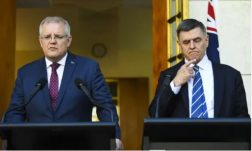The number of full-time GPs has grown by just 2.4 per cent over the 10 years since 2005 – compared to 22 per cent for full-time specialists during the same time – despite the greater need for GPs, according to a new study by the University of Melbourne.
The ANZ Melbourne Institute Health Sector Report found there were more women working as GPs – up from 33 per cent in 2005 to 40 per cent in 2015 – but they earn 25 per cent less than male doctors.
While GP earnings are increasing, Medicare payments for a GP working full-time have fallen in real terms since the Medicare rebate was frozen by the Labour Government in 2013.
Now the Government is expected to lift the freeze – at a cost of $500 million – in next week’s Budget – and the Grattan Institute is calling on Malcolm Turnbull to give the extra money to GPs.
Payments needed to fund Medicare reform
They want doctors to be paid to provide information to primary health networks while protecting patient privacy. This data would then be used to reform how GPs are paid.
Currently Medicare pays $37.05 to clinics for each consultation under 20 minutes – but the actual amount a GP takes home in their pay is much less.
Earlier this year, a young GP Elizabeth Oliver wrote a blog post called ‘What I do for the $37.05 that no one wants to pay’ that was published in the Sydney Morning Herald.
You can read it here. In it, she details everything she does in a typical working day – and how much she is paid.
It’s not ‘easy money’. Most GPs earn half of what they could as a specialist.
But with our population getting older – and more of us living with chronic conditions – they are critical to keeping people out of hospitals and our healthcare costs down.
Could this payment be the answer?





